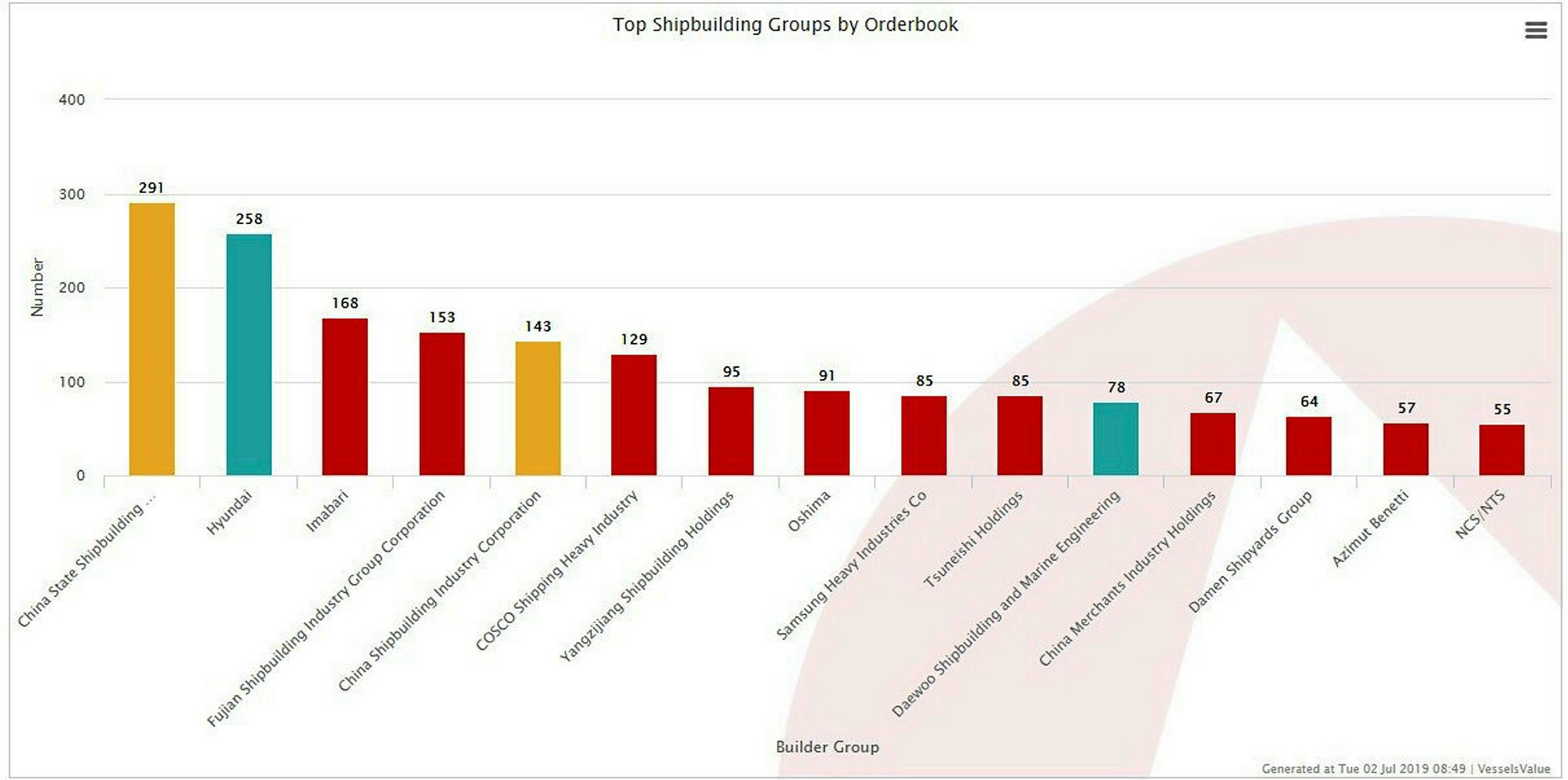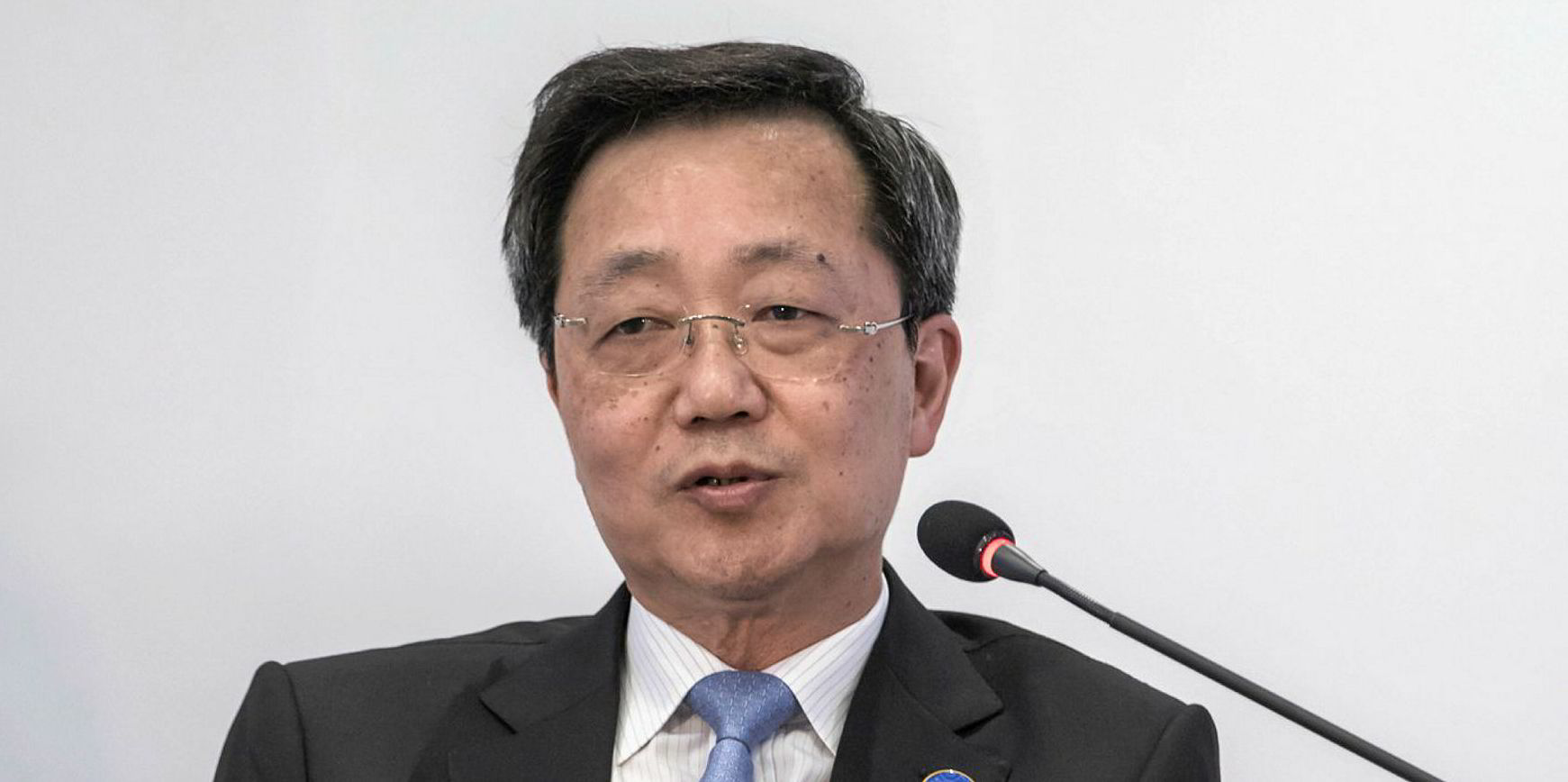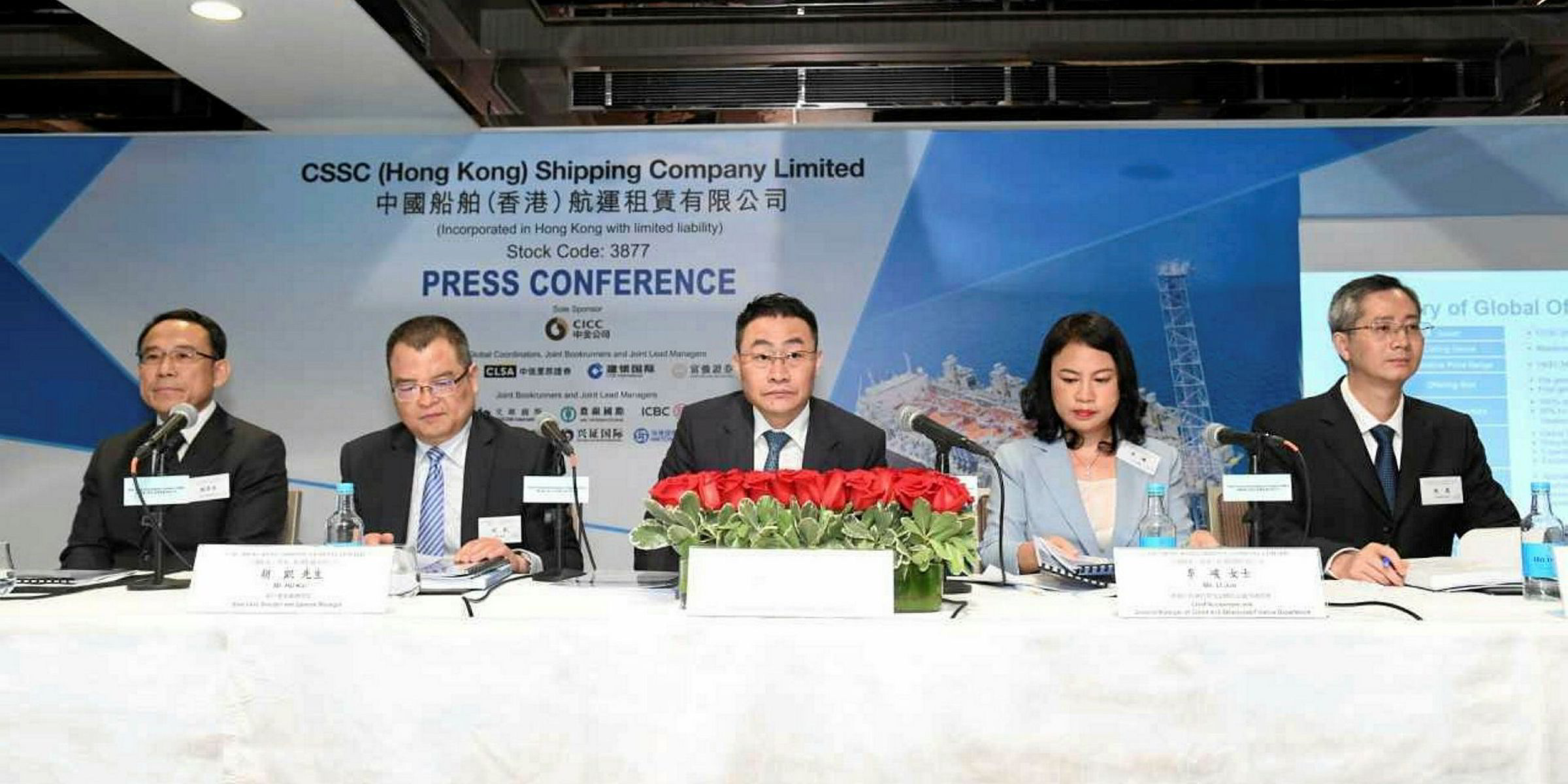China's two big shipbuilding groups are hurrying to outdo one another with financial deals in a dry season for newbuilding orders.
Officials at China State Shipbuilding Corp (CSSC) and China Shipbuilding Industry Corp (CSIC) deny their state-ordered merger has anything to do with a sudden burst of recent financial transactions on both sides.
But independent Chinese industry observers say the recent flurry of deals is driven by the need of top managers at each group to show their dealmaking muscle and bulk up their respective portfolios ahead of the merger.
The long-rumoured deal was announced this week. Until this week's announcement, both sides had kept officially mum on what was long an open secret.
One CSIC executive told TradeWinds only hours before the announcement: “Maybe [Chinese] President Xi Jinping knows the plan. Or maybe the chairmen of the two groups.”
Meanwhile, in the immediate run-up to this week's confirmation, the finance arms of both sides were busy preparing transactions for public signings.
Last week, CSIC’s leasing arm — CSIC Leasing — roughly doubled the size of its fleet, at least on paper. In a signing ceremony for invited guests in Beijing, parent group CSIC announced orders worth CNY 14.3bn ($2.08bn), most placed by CSIC Leasing, either on its own or with partners, along with 13 charter contracts.
Playing catch-up

A CSIC Leasing source pegged his company's total fleet before the 24-ship Beijing signing at under 30 vessels.
But shipbuilding players say CSIC is playing catch-up to larger rival CSSC, which just finished a somewhat lacklustre Hong Kong stock-listing of leasing arm CSSC Shipping.
The larger southern shipyard group already carried out its large-scale signing ceremony in January. CSSC was then reported to have contracted up to 36 newbuildings worth more than CNY 10bn ($1.48bn), likewise with financial support from its leasing operation.
CSSC Shipping boasts a fleet of some 100 vessels.
Shipbuilding sources say the primary purpose of the big packages of transactions is to give work to shipyards under their control, and to be conspicuous about doing so at a time when Beijing officials are preparing to oversee the massive merger.
Observers compare the situation to that of the former Cosco and China Shipping groups a few years back as they prepared to merge under the supervision of party and state officials. One crucial part of bringing about a successful merger of the corresponding parts of the two groups was finding the right combination of leaders from both sides.
The head of the China Cosco Shipping of today is Captain Xu Lirong, a veteran of the junior partner in the merger, China Shipping.
New transactions

The two state shipyard groups along with their finance arms now will be looking at new transactions, with an eye to winning in the merger process rather than just for the sake of expansion.
In the past, both groups' leasing arms have pursued third-party sale-and-leaseback business unrelated to their own shipyards, including in CSIC's case of four containerships and another four product tankers built at South Korean yards. They have also sought to speed up their fleet growth by purchasing pieces of larger bank-owned leasing houses' portfolios.
One CSIC official told TradeWinds this week that such third-party leasing business is no longer on the cards for the time being, and that finance deals will concentrate on supporting the yard's orderbook. But he denied that the transactions are being driven by the upcoming merger.





